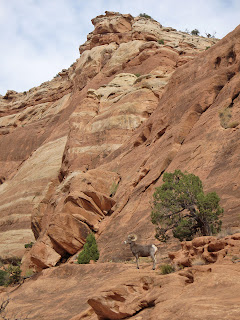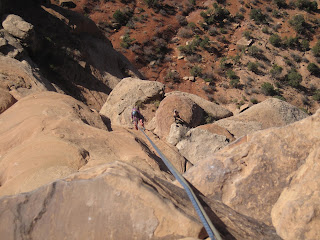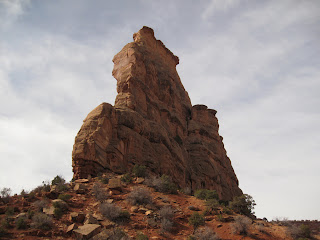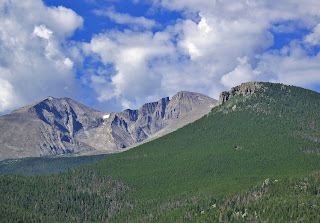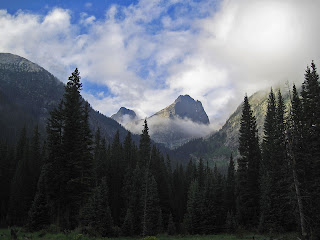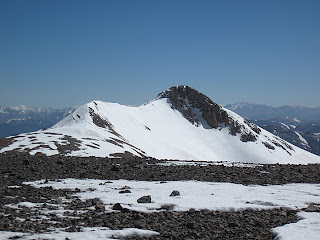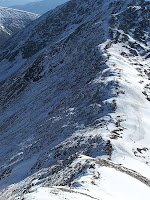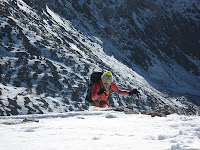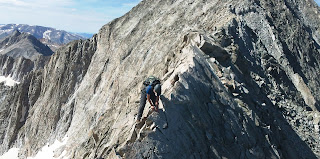 |
Chris Sharma on La Dura Dura (5.15c).
Screenshot from BigUp's Reel Rock 7. |
When Adam Ondra sent
Change at Flatanger, Norway, the 20-year-old Czech climber had just pushed the of world climbing to a whole new level... or so it seemed. It was the first climb rated 5.15c (9b+), a grade that had once seemed impossible. Just a few months later, he and climbing legend Chris Sharma were sparring to redpoint something even harder:
La Dura Dura. It was a climb that even Sharma, who at 20 years of age established the world's first 5.15a (9a+) when he sent
Realization, had once called impossible. Though it was
Ondra who first sent this futuristic climb, Sharma soon followed with a send of his own. The climbers set the rating at 5.15c (9b+). Both Ondra and Sharma agreed that
La Dura Dura was probably the hardest rock climb in the world. Some have speculated that
La Dura Dura may actually prove to be the world's first 5.15d.
There are only a handful of climbers in the world who can climb 5.15. The list is limited to names like Alex Megos, Ramon Julian, Dave Graham, Adam Ondra and, of course, Chris Sharma. Undoubtedly there are a few others, but this very small list shows just how hard the grade is. If these climbers, people like Sharma and Ondra, find these climbs to be at the very limits of their abilities, taking months of rehearsal and many many attempts to complete, just how much more difficult can climbing get? Have humans now reached the limits of physical capacity where, short of developing sticky pads on our fingers or some improbable gear innovation, we simply are not able to climb anything harder? Will we ever see a 5.15d or even a 5.16? How about bouldering? V16? V17? The alpine realm seems more open, with many peaks out there that still have yet to be climbed. But eventually, it seems, humans will soon have stood on every high point in this wide world. What then? Are the sports of climbing and mountaineering destined to fall in decrepit mediocrity without the excitement of progress? Already here in Colorado there are no exciting peaks still awaiting a first ascent. Even finding a new line on any of the major peaks is going to be hard to impossible (though Tommy Caldwell and Joe Mills did establish the
first 5.14 line on the Diamond one month ago). Or will someone in the next generation prove that what is considered possible is never capped?
 |
Cerro Torre, where Hayden Kennedy and
Jason Kruk made the first "fair means"
ascent of the in famous Compressor Route.
Photo courtesy Wikimedia Commons. |
Despite that the sports of climbing and mountaineering seem limited by the capacity of human physiology, new levels of achievement have been reached in recent years. Hayden Kennedy and Jason Kruk made the
first "fair means" ascent of the legendary
Compressor Route on Cerro Torre in the Torres Del Paine region of Patagonia in January of 2012. The
Compressor Route is infamous in the history of mountaineering and considered by some the biggest atrocity in alpinism due to its excessive bolts and the abandonment of a heavy air-compressor on top of the mountain used to create the bolt ladder on the 1970 first ascent. Kennedy and Kruk decided, however, to chop the bolts off as they descended from the mountain after their ascent. A few days later,
David Llama climbed the route completely free calling it 8a (5.13b). Though the chopping of the bolts was controversial, these two ascents show that what people believe to be possible in alpine climbing world has changed over the decades.
Another young climber who is proving that there are other ways than just pure difficulty which the sports of climbing and mountaineering can expand is Alex Honnold. In 2008 Honnold made the first free solo ascent of the
Regular Northwest Face of Half Dome (VI 5.12b), climbing the 23-pitch route without a rope. Honnold's achievements have proven that newer generations of climbers are still willing to push the sport in "bold" directions. In 2012 Honnold managed to achieve a solo
link-up Half Dome, the Nose and Mt. Watkins in a single day.
Modern Yosemite pioneer Tommy Caldwell also continues to push the sport of climbing. At 35 years of age, Caldwell has done more to push the sport of rock climbing to new levels than almost any one. In 2003 he put several months of hard work into a massive, overhanging cave on a remote wall in western Colorado, establishing Kryptonite, the country's first 5.14d (9a), and Flex Luthor, quite likely the first 5.15 in North America though it remains unrepeated and unconfirmed to this day. In recent years, Caldwell has been back where he feels most comfortable, on big walls, freeing old aid lines on Colorado's Diamond and Yosemite's Half Dome and El Capitan. Caldwell's free version of
Mescalito on El Capitan, if completed, could be the hardest big-wall free climb in the world.
And what about the next generation? Young climbers today are better than ever. A crop of super-young, highly talented climbers are already scaling the best rock in the world, threatening to push the boundaries of a sport that has been accused of stagnation. 12-year-olds Mirko Caballero and Ashima Shiraishia have
both climbed V13. Ashima, in fact, became the youngest person to climb that grade when she sent
Crown of Aragorn at Hueco Tanks State Park, Texas at the age of 11. Other young climbers like Brooke Raboutou and Kai Lightner and others are all also climbing 5.14 and are all under 14 years of age.
And in the mountains, the great peaks of Karakoram and Chamonix continue to prove to be the forefront in the world of mountaineering, as new lines are found and ascended. Hard mixed routes and ice climbs are established each season. The popularity of the Ouray Ice Climbing Festival grows every year. Way up north, along the Great Gorge of the Ruth Glacier in Denali National Park, climbers have been climbing new faces and establishing brutal link-ups and traverses that nobody before had ever imagined. There are still many pitches of rock, ice and snow in this world that have yet to be climbed. These hotspots continue to produce neo-classic alpine routes that will entice and challenge mountaineers for generations to come. And there is more to be found. After all, 24,836-foot Gangkhar Puensum is generally considered the highest unclimbed mountain remaining in the world, and it is likely to stay that way for the time being, as climbing it is against the rules of the local governments. There are several other 7000m peaks that have yet to see a first ascent.
With all the growth in the sports of climbing and mountaineering, it is easy to think that we are reaching the limits of what is possible for a human. There are only so many mountains to explore. Someday soon we will have climbed them all. On the other hand, progressing into harder and harder difficulty too seems capped by simple human physiology. We can only hold onto to holds so small. Yet, despite these constraints, it seems that a new generation continues to surprise, finding and sending harder and harder climbs, or re-hashing old climbs in new style. Though maybe someday we will find that limit, for now the world of climbing and mountaineering continues to thrive.
Check out this
video of Adam Ondra and Chris Sharma battling for the first ascent of
La Dura Dura (5.15c):
Visit THE ARCHIVE: A list of most of our articles sorted by department
Follow us on Twitter!
Copyright notice: This website and all its contents are the intellectual property of www.coloradomountaineering.com and its authors. None of the content can be used or reproduced without the approval of www.coloradomountaineering.com.
Climbing and mountaineering are dangerous!! Please see the DISCLAIMER page
For information about how to contact us, visit this link




